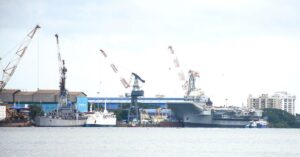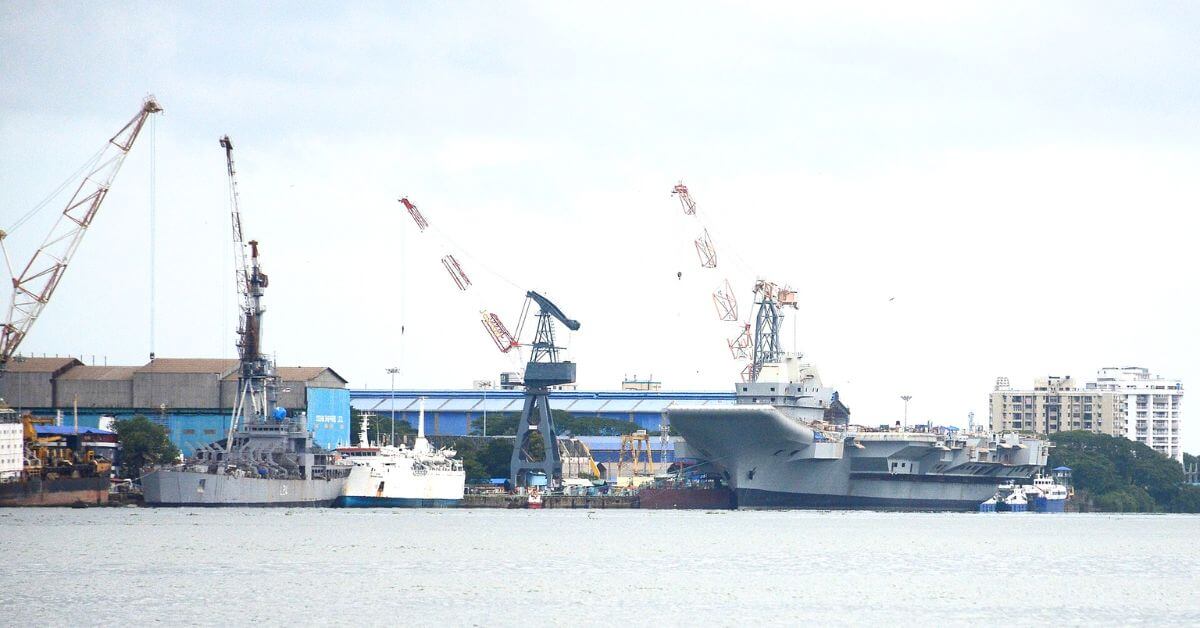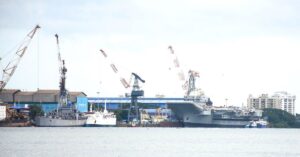
Inland Cargo Vessel Collides With Yacht On Prinses Margrietkanaal, Leaving 1 Dead
September 25, 2025
World’s First Methanol-Hydrogen Electric Riverboat “Yuanchun 001” Launched In China
September 26, 2025

In a historic move to strengthen its maritime capabilities, India’s Union Cabinet approved a ₹69,725 crore (around $8 billion) incentive package for the shipping and ports sector on Wednesday.
The decision aims to transform India’s shipbuilding industry, modernise port infrastructure, encourage domestic ship ownership, and position India as a major player in global shipping.
The goal is to move India from the 16th position in global shipbuilding to a place among the top 10 by 2030, and to reach the top five by 2047. The initiative is expected to generate 3 million jobs and attract investments worth ₹4.5 trillion.
Union Information and Broadcasting Minister Ashwini Vaishnaw said the maritime reforms are part of a larger ₹95,000 crore government package that also includes investments in railways, highways, human resources, and medical education.
Four Pillars of the Maritime Growth Plan
The ₹69,725 crore package rests on four major pillars:
1. Shipbuilding Financial Assistance (₹24,736 Crore)
The SBFA scheme will offer direct financial incentives to shipyards. Vessels valued below ₹100 crore will get a 15% subsidy, those above ₹100 crore will get 20%, and special, green, and hybrid vessels will receive 25%, with a requirement of at least 30% local value addition.
Additionally, a credit note equivalent to 40% of a vessel’s scrap value will be provided when the ship is dismantled in India. This credit can be used toward the cost of constructing a new vessel. A total of ₹20,554 crore has been allocated for SBFA until March 2036.
2. Maritime Development Fund (₹25,000 Crore)
The MDF will include a ₹20,000 crore Maritime Investment Fund to support equity investments and a ₹5,000 crore Interest Incentivisation Fund offering a 3% interest subsidy for loans linked to shipbuilding, ship repair, port expansion, inland waterways, and coastal shipping projects.
3. Shipbuilding Development Fund (₹19,989 Crore)
This fund will promote the creation of shipbuilding and maritime clusters to enhance efficiency, infrastructure, and scale in the sector.
4. Legal and Policy Reforms
The government will work with stakeholders to build a legal framework for dispute resolution and arbitration, ensuring smoother operations and investor confidence.
Impact on Shipbuilding and Ports
The reforms aim to raise India’s shipbuilding capacity from just over 0.1 million gross tonnes to 4.5 million gross tonnes initially, with the potential to reach 8.2 million gross tonnes. The package also seeks to add 250 million tonnes per annum to port capacity and more than 2,500 vessels to the fleet.
The maritime sector has widely welcomed the announcement. Rear Admiral Vipin Kumar Saxena (retd), CEO of Swan Defence and Heavy Industries, called it an important step for shipbuilding growth. Capt Anand Jayaraman of Mitsui O.S.K. Lines said strengthening shipbuilding in India is essential as global supply chains change.
Nagarajan Jambunathan, CFO of JSW Infrastructure, said the move will speed up trade flows and attract private investment. Pushpank Kaushik, CEO of Jassper Shipping, said the shipbreaking incentives will support sustainable and circular economy practices.
References: cnbctv18, livemint
Source: Maritime Shipping News


